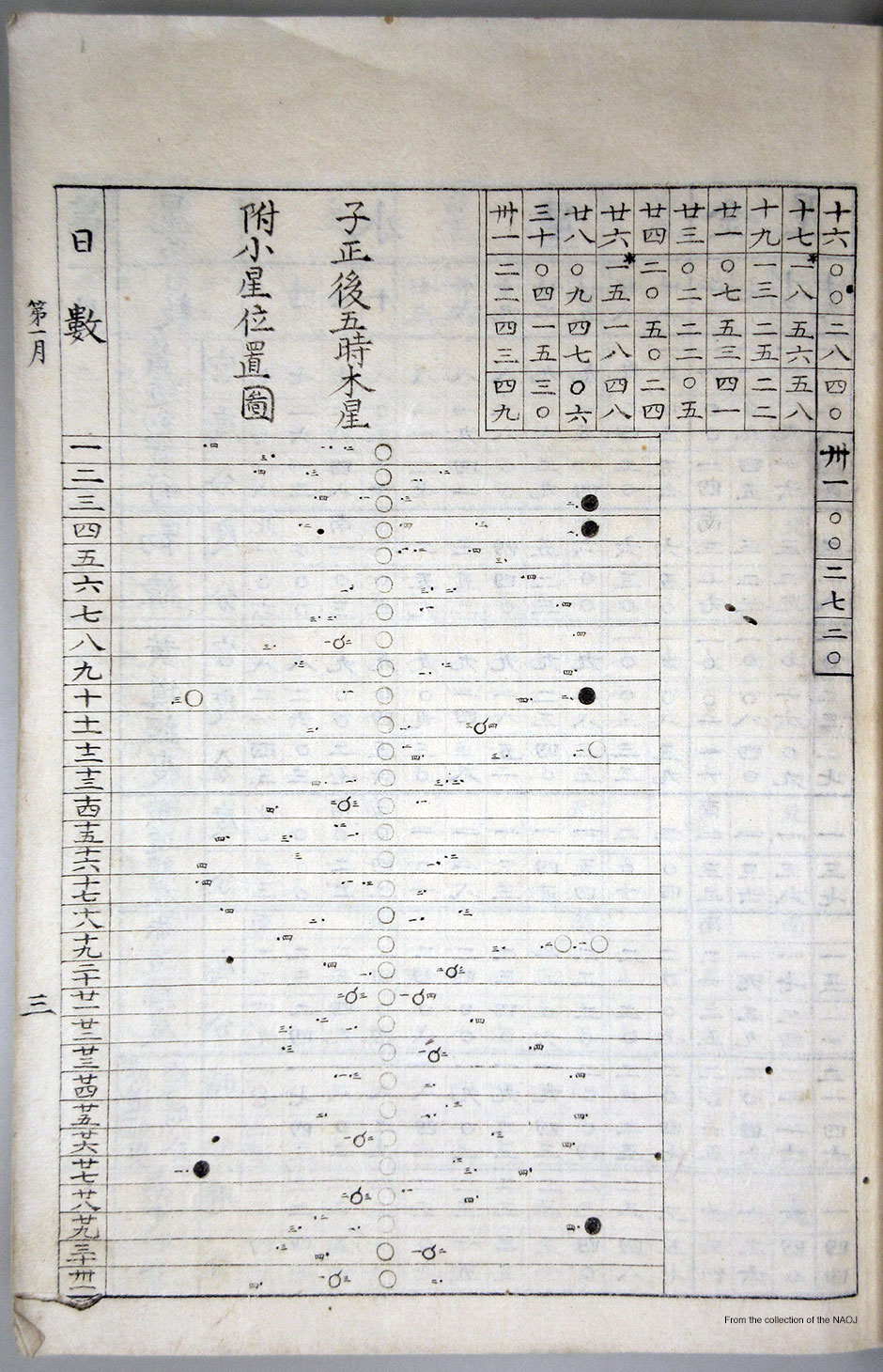British Nautical Almanac (Angeria Kokaireki)
Historical illustration・

This is a translation of the British navigation calendar of 1828. “Angeria” means England and “Kokaireki” means nautical almanac. In those days, there was no direct exchange between England and Japan, so no one could translate astronomical terms from English into Japanese. Therefore, Kagesuke Shibukawa stated in the preface that he couldn’t translate the preface and explanation of the calendar. He also admitted that he might have made some errors.
Since it is a nautical almanac, the main content of this book is the positions of celestial bodies. In the preface, it is written that the values for Edo (Tokyo) can be found from the British calendar values by adding 9 hours and 20 minutes, which is the longitude difference between Gereen'uiku Observatory (the Royal Observatory Greenwich) and Edo.
Another book owned by NAOJ, “British Astronomical Terms (Angeria Tengakugoroku)” can be considered an English-Japanese astronomical dictionary listing English words and the Japanese translations. The author is Kagesuke Shibukawa, the same author as the previous book. At that time, the Japanese Shogunate only interacted with Dutch people. But, there were no Dutch people in Japan who understood English well. When we read this book, we can see how Kagesuke struggled to translate it.
Translation by: Hiroko Tsuzuki and Ramsey Lundock (NAOJ)
(Note) In addition to the standard Gregorian calendar, Japan uses a reign era calendar. The different eras are defined by changes in the Japanese government, and accompanied by changes in Japanese society.
Image Data
| Date Created | 827 (Bunsei Era 10, note) |
|---|---|
| Author | Kagesuke Shibukawa |
| Credit | Collection of the National Astronomical Observatory of Japan |
Downloads
- Medium resolution (940 x 1460, 338KB)
- High resolution (2000 x 3106, 4.8MB)
- Maximum resolution (3200 x 5000, 10.5MB)